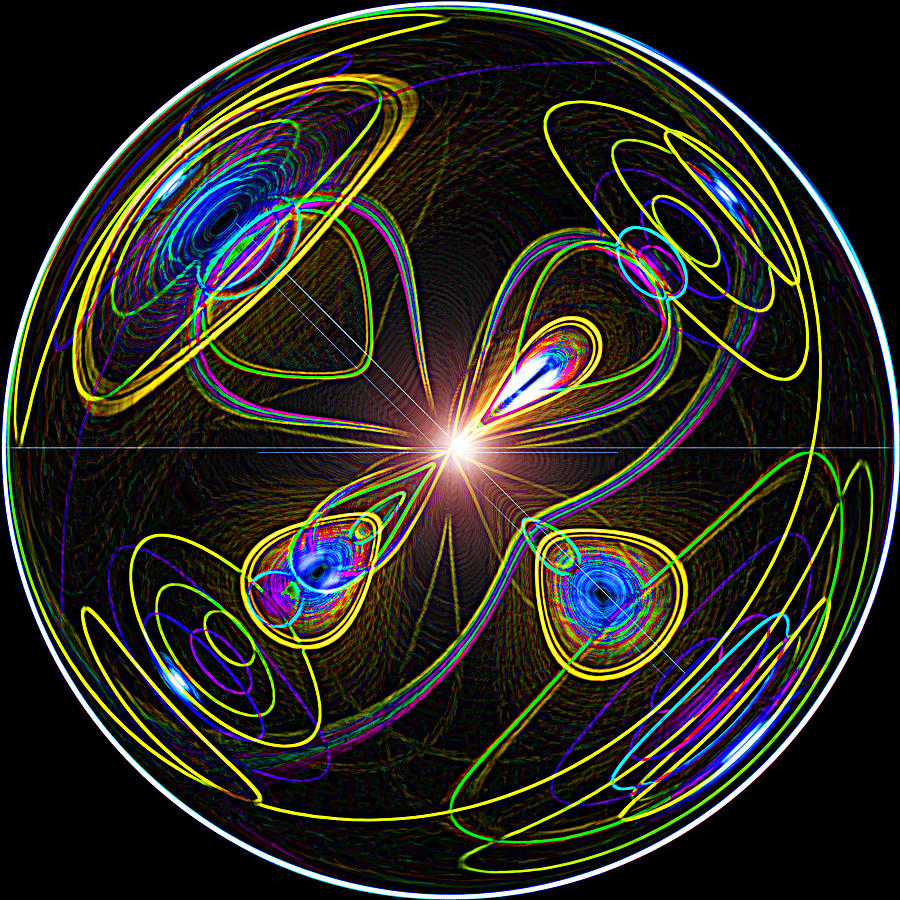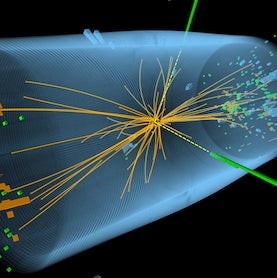

Indeed, the LHC is a commensurately awe-inspiring machine – the largest science experiment even today, 12 years after it started operating. This name is a modification of “goddamn particle”, which is what physicist Leon Lederman called the Higgs boson in 1993 because it was proving so hard to find.

The Higgs boson is often called the “god particle”, but the particle has no theological connotations, contrary to several pseudoscientific articles that have appeared in the popular press since its discovery. Physicists also need to study further how the Higgs boson couples with itself, to explain how the particle gets its own mass. This said, based on 10 years’ worth of data from the LHC, physicists have thus far studied the Higgs boson’s interactions with the heavier particles more than with the lighter ones, like electrons and positrons. Composite particles, like protons and neutrons, can get their mass from many sources, only one of which is the masses of their constituent particles.) (Note that only elementary particles get their mass through the Higgs mechanism. The less strong the interaction with the Higgs boson, the lighter a particle will be.

So for example, the top quark is the heaviest known elementary particle because it interacts most strongly with the Higgs boson. The strength with which the Higgs boson interacts with a particle is proportional to the particle’s mass. Similarly, the Higgs boson is an excitation in the Higgs field. Photo: CERNĪ photon is a particle that physicists understand to be an excitation of the electromagnetic energy field. ATLAS collaboration spokesperson Fabiola Gianotti presenting evidence of the Higgs boson’s discovery at CERN, July 4, 2012. ‘Anderson’ stands for Philip Warren Anderson and ”t Hooft’ for Gerardus ‘t Hooft.Īfter the particle’s discovery, Peter Higgs and François Englert were awarded the Nobel Prize for physics in 2013. Most people refer to the mechanism as the Higgs mechanism but Peter Higgs has said that he calls it the “Anderson-Brout-Englert-Guralnik-Hagen-Higgs-Kibble-‘t Hooft mechanism”. The other groups were 1) Robert Brout and François Englert and 2) Gerald Guralnik, C.R. One of these groups was just Peter Higgs, a British theoretical physicist. The existence of the mechanism was predicted by three independent groups in 1964. The Higgs field gives mass to subatomic particles through the Higgs mechanism. Detectors on the collider, including two called ATLAS and CMS, study the detritus of these collisions for signs of the Higgs boson. The colossal apparatus that helped physicists find the Higgs boson was the Large Hadron Collider (LHC), a 27-km long tube in which protons are accelerated with the help of very strong magnets to nearly the speed of light, and smashed head on. However, it added new questions to the pile of unresolved mysteries.īased on which questions they would like to have answered and how, physicists today have to make crucial decisions about what their next experiments will do and at what cost. So the discovery of the particle closed an important avenue of physics research after many decades to much celebration and fanfare. Proving that the Higgs boson exists is also proof that the Higgs mechanism, first predicted in the 1960s, exists. The discovery of this subatomic particle validated the idea that the Higgs field – a field of energy that pervades the universe, and which gives subatomic particles their mass – is real. Ten years ago on this day, scientists at the world’s largest physics experiment announced that they had discovered the Higgs boson. Physicists around the world are also considering whether they need a bigger particle collider to unravel this and other mysteries, in which the Higgs boson may also have a hand.Its discovery was a great achievement, but there still many things we don’t know about the Higgs boson, including an important mystery related to its own mass.The Higgs boson is an excitation in the Higgs field – a field of energy that pervades the universe and which gives subatomic elementary particles their mass.On July 4, 2012, physicists working with the Large Hadron Collider experiment in Europe announced they had found the Higgs boson, 48 years after it was predicted.A side-on view of the CMS detector at the Large Hadron Collider.


 0 kommentar(er)
0 kommentar(er)
